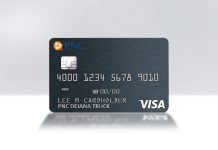
Credit improvement can take days, months, or even years, depending on the reasons due to which your credit score dipped in the first place. It could be a non-payment, late payment, poor payment record, low balance, higher utilization, bankruptcy, property foreclosure, negative information, and any delinquencies and errors on your credit report.
Yet all of these factors and more effect everyone differently since everyone’s credit history is unique. As a result, the recovery time from each of these setbacks is different too. We’ll get to that in a short while, but first, let’s understand the major elements that makeup and influence your credit score.
Factors that impact the credit score:
At present, there are two primary credit-scoring sources- FICO and VantageScore. They both consider the same factors to calculate your credit score, although a little differently. Let’s take a closer look.
Factors of FICO scoring model:
- Payment history – 35%
- Amounts owed – 30%
- Length of credit history – 15%
- New credit – 10%
- Credit mix – 10%
Now let’s see how VantageScore credit-scoring system uses the same factors differently:
- Amounts owed – Extremely influential
- Credit mix – Highly influential
- Payment history – Moderately influential
- Length of credit history – Less influential
- New credit – Less influential
As you can see, the debts or amounts owed and payment history are two of the most important factors used by both to determine your creditworthiness. Thus keeping your account balance high, or in other words, maintaining a low utilization rate is a great way of building a positive credit record.
What’s the ideal credit utilization ratio?
The ideal credit utilization rate is about 30%. What I mean by that is your credit usage at any given time should not exceed 30% of your total credit limit. So if you have a 1000 bucks credit limit allowed, make sure not to spend all of it but keep it around 300. Less usage makes it easier for you to pay back the debts within the billing cycle and clear off the dues for a good payment record in the long run.
Paying off the debts is certainly the best way of recovering from a poor credit score. But clearing off the amount won’t reflect on your credit report immediately.
For any changes to appear on your credit file, your lender or credit card company must submit a request with the credit bureaus. Something most lenders do every month but can be expedited should you make a request. Once a request is submitted, it may take one or two billing cycles or a month or two for your credit report to be updated with desired changes.
Now how long or soon it takes to affect your credit score after you’ve paid the dues depends entirely on the type of debt you owed. So let’s get familiar with different types of debts and the recovery time for each.
Types Of Debt:
- Revolving credit refers to an open line of credit or credit card from which money can be borrowed, paid back, re-borrowed, and repaid over and over again till its expiry or for a specific period of time set in the beginning.The best way to ensure a good credit record when it comes to an active revolving account is timely payments and a low utilization rate as I mentioned earlier.
- Installment loans are fixed sums of money that you can borrow for a set duration while repaying it at regular intervals or every month. Examples of installment loans include personal loans, student loans, auto loans, and mortgages, etc. Timely payments of these loans will reduce your total debt as well as help you shape up a positive credit behavior.
- Collection accounts are something you wouldn’t wish to encounter in your credit report. Any credit account for which you haven’t paid the debts is sold off to a debt collection agency for recovery.A collection account on your credit file is a negative item, meaning it stays on for around 7 years regardless of clearing the debt. So the best way- try not to leave any credit line unpaid!
- Settled debt for less amount than borrowed is yet another negative remark that stays on your credit report for 7 years. Therefore, it’s better to pay back the full amount to avoid 7 long years of being delinquent or default.
Apart from the types of debt, many other events can also hamper your credit score for quite longer than you think.
Let’s take a quick look at the recovery time from some of the most common events:
- Bankruptcy can affect your credit report for 7 years or more. 7 years for chapter 13 bankruptcy and 10 years for chapter 7 bankruptcy.
- Foreclosures can stay on your file for 7 years as well. Recovering from a home foreclosure can take anywhere about 3 years or more.
- Missed/ defaulted payment can take about 18 months for your credit score to recover.
- Late mortgage payment by 30 or 90 days will consume around 9 months before changes can reflect on your credit report.
- Closing a credit card account takes 3 months to show up.
- Maxed credit card account after 3 months.
- Applying for a new credit card also takes 3 months before your credit score can improve.
Now that you have a fair idea about how debts, types of debts, balance, payment history, negative information, and other events and errors affect your credit report, let’s find out the best practices that you can adopt to maintain a healthy credit status.
Best Ways to Boost Credit Score:
- Maintain a low credit utilization rate (30% being the ideal limit).
- Keep up with your debt payments. This includes everything from credit cards to student loans. A benefit of paying off student loans early is that you can refinance them into one payment, making budgeting easier; student loans are also easier to manage and ultimately save some money.
- Increase your credit limit.
- Remove incorrect and negative information from your credit report.
- Keep your old existing accounts open even after clearing off the debt. (The older the account with a good payment record, the better it is for your credit score and loan/ credit approval in the future).
- Don’t apply for new credit often as every time you apply for a new credit account, a hard inquiry is made which can stay on your report for 12 months.
- Last but not least, add yourself as an authorized user on someone else’s credit account with good credit history.
Conclusion
Making the timely payment is undoubtedly the best way to rebuild your credit value without running in circles. On-time payments are how you can build and maintain a good credit history which will help you get loans and credit card approval in no time.
Lowering your card usage is yet another effective way of keeping your debts low so as to be able to repay them on-time without having to worry about penalties and any red flags on your credit report.
Finally, do not forget to submit a request regarding any payments or changes you make, since no changes will reflect on your report unless your lender submits it with the credit bureaus.










